Trey Anastasio, the legendary frontman of Phish, is renowned not only for his improvisational prowess and songwriting but also for his distinctive guitar tone. A crucial element in achieving this iconic sound is his collection of exceptional guitars, most notably his custom-built Paul Languedoc electric guitars and his prized Martin acoustic guitars. This article explores the details of Trey Anastasio’s guitar arsenal, offering a closer look at the instruments that shape his signature sound.
Languedoc guitars hold a special place in Trey’s setup. These unique, handcrafted instruments are celebrated for their distinctive construction. Unlike typical guitars, Languedocs feature a 25.5″ neck scale, similar to Fender Stratocasters or Telecasters, but are equipped with dual humbucker pickups, akin to Gibson Les Pauls, 335s, or SGs. This combination is rare in mass-produced guitars, setting Languedocs apart. Jerry Garcia’s guitars also notably featured this combination. This design provides a unique sonic blend, offering the “twangy Fender-ish bite” from the scale length combined with the “high-output, compressed, mid-range-heavy hard rock sound” from the humbuckers, as Trey himself describes it: “the bite of a Strat and … the meat of a hollowbody.” The superior tonewoods and hollow body construction contribute to a woody, natural tone and exceptional sustain. Paul Languedoc’s hollowbody guitars are fully braced and completely hollow, much like a violin, further enhancing their resonant qualities.
Later Languedoc models incorporated coil-tapped humbuckers, expanding tonal versatility with single-coil options. Mini-switches located beneath the lower F-hole control pickup selection, coil-splitting, and series/parallel configurations.
In 2019, as Trey’s amplifier choices leaned towards high-gain setups, modifications were made to his Languedoc guitars. The series/parallel mini-toggle switch was removed, but a mini-toggle for pickup selection remained. This toggle offers humbucker selection in the middle position, and inner and outer single coil options in the outer positions. A push-pull control for a Tip/Ring/Sleeve (TRS) stereo output was also introduced. This TRS output allows Trey to send one side of the stereo signal directly to his amplifier, bypassing effects and a/b boxes, capturing the pure interaction between the guitar’s pickups and the first preamp tube (V1) of his high-gain amps. The other side of the stereo output connects to his RST-24 effects rig, maintaining access to his extensive sound palette.
ELECTRIC GUITARS
#1: Old Reliable (“Mar Mar”).
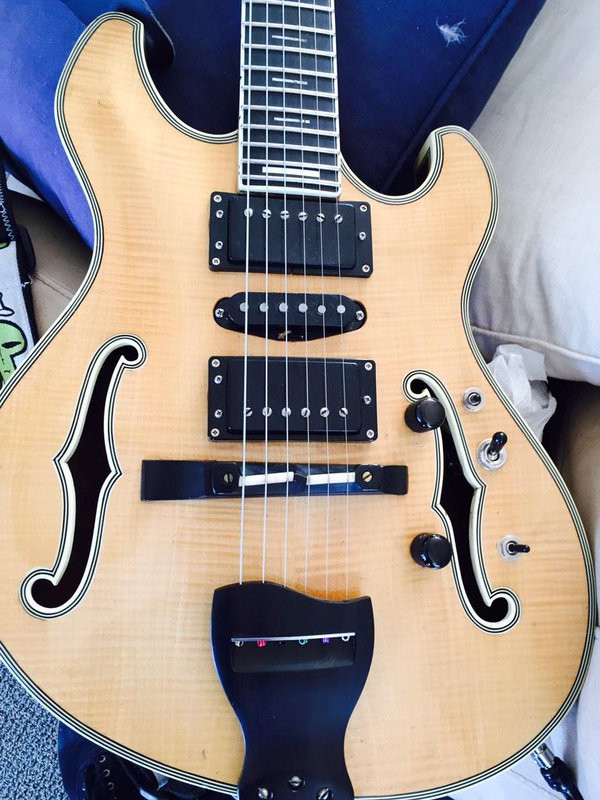 Trey Anastasio's Old Reliable Languedoc guitar, also known as Blonde No. 1, built in 1987.
Trey Anastasio's Old Reliable Languedoc guitar, also known as Blonde No. 1, built in 1987.
Also known as “Blonde No. 1,” this iconic Trey Anastasio Guitar was crafted in 1987. Notably, a single coil pickup was reinstalled for the Fare Thee Well concerts. The headstock features a distinctive “Marley” inlay with a thought bubble that reads “Who’s the Mar-Mar?”. This guitar’s headstock design differs from later Languedocs, which adopted a shape inspired by the state of Vermont.
#2: Spruce “I’m the Mar-Mar” (Refurbished 2014 with sunburst refinish).
 Trey Anastasio's Spruce Languedoc guitar, nicknamed "I'm the Mar-Mar", refurbished in 2014 with a sunburst finish.
Trey Anastasio's Spruce Languedoc guitar, nicknamed "I'm the Mar-Mar", refurbished in 2014 with a sunburst finish.
This Trey Anastasio guitar features a headstock inlay depicting Marley chasing a cat, accompanied by a thought bubble above Marley stating “I’m the Mar-Mar!”. During a 2014 TAB Tour, Trey recounted the history of this instrument, revealing it was originally built in August 1991 with a spruce top and maple back. Due to a neck twist issue shortly after construction, it fell out of use. However, Paul Languedoc reclaimed the guitar, replaced the neck, applied a sunburst refinish, and returned it to Trey in refurbished condition.
#3: Koa 1, 1996.
 Close-up of Trey Anastasio's Koa 1 Languedoc guitar, showcasing rectangle inlays and white plastic binding.
Close-up of Trey Anastasio's Koa 1 Languedoc guitar, showcasing rectangle inlays and white plastic binding.
This 1996 Languedoc, known as Koa 1, features rectangle inlays, white plastic binding, and a less pronounced flame in the koa wood. Paul Languedoc’s signature is inlaid on the headstock. This guitar became a favorite of Trey’s, seeing extensive use particularly during the 3.0 era of Phish and prominently during the Baker’s Dozen run at Madison Square Garden, with Koa 2 used sparingly for alternate tunings. Prior to the 2022 Spring MSG run, Koa 1 underwent a plek, planing, and refret with Jescar 50×100 frets. As of Spring 2022, it includes a push-pull knob and TRS output, enabling Trey to select amplifier heads directly from the guitar, bypassing a footswitch.
#4: Koa 2, 2002.
 Trey Anastasio's Koa 2 Languedoc guitar, featuring a more prominent flame and bracket inlays.
Trey Anastasio's Koa 2 Languedoc guitar, featuring a more prominent flame and bracket inlays.
Koa 2, built in 2002, exhibits a more prominent flame figure in the koa wood compared to Koa 1. It also features white plastic binding and “bracket” inlays at the 12th and 24th frets. Paul Languedoc’s signature is inlaid on the headstock. While initially believed to be from 1999, Paul Languedoc confirmed the build year as 2002. Since 2019, this guitar has been equipped with a TRS output and a tip/ring switch (replacing the series/parallel switch) to achieve a stereo output, allowing one output to go direct to the amp and the other to the effects rig. Koa 2 also received a plek, planing, and refret (Jescar 50×100) before the 2022 Spring MSG run.
#5: Ocelot (Koa 3), 2010.
The Ocelot, or Koa 3, built in 2010, is distinguished by an ocelot inlay on the headstock. It showcases a very prominent flame and a darker koa color, along with redwood binding (some sources suggest Cocobolo). Trey Anastasio officially introduced this guitar at the Greek Theatre in Berkeley on August 5, 2010. It features “bracket”-style inlays at the 12th and 24th frets. Fans have affectionately nicknamed this guitar the “Ocedoc.” In November 2020, a second output was added to this guitar, replacing the series/parallel switch with a channel switch for a dual output. This modification allows one output to be sent directly to the amplifier and the second to the effects rig.
#6: Blonde No. 2.
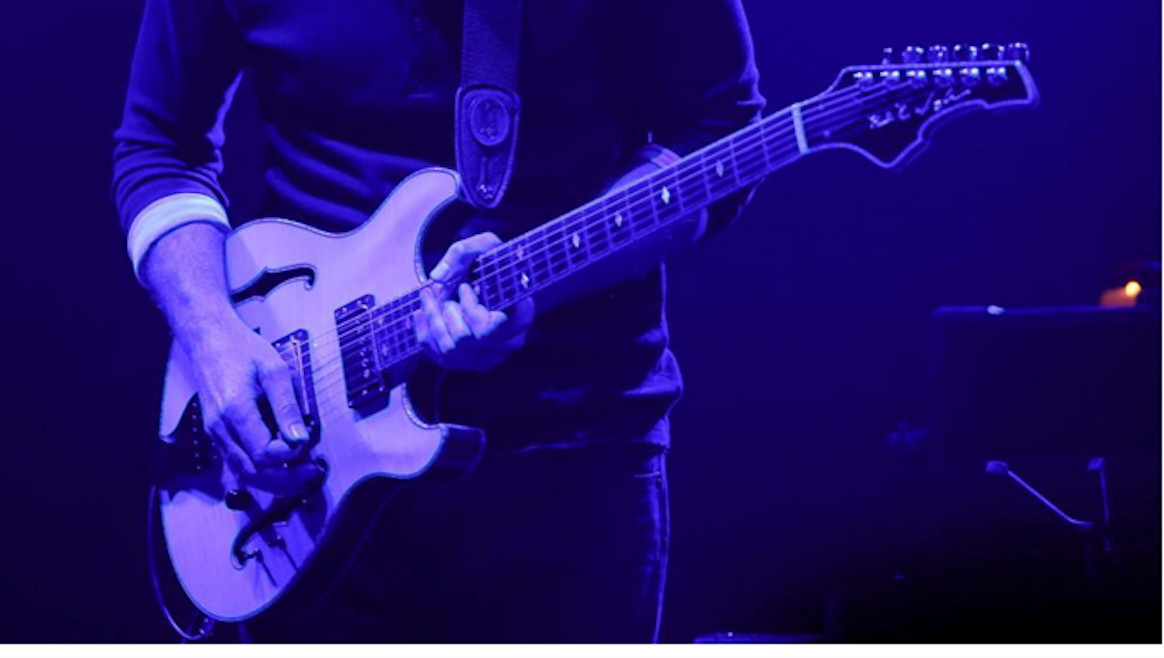 Trey Anastasio's Blonde No. 2 Languedoc guitar, featuring wood binding and diamond inlays.
Trey Anastasio's Blonde No. 2 Languedoc guitar, featuring wood binding and diamond inlays.
Blonde No. 2, another notable Trey Anastasio guitar, features wood binding and Paul Languedoc’s signature on the headstock. It was introduced during the Summer Tour 2016. Diamond inlays adorn the fretboard, with double-diamonds at the 12th and 24th frets. Despite Trey’s initial description of a spruce top, information from Paul Languedoc indicates the topwood is actually maple, with mahogany back and sides and curly maple binding, consistent with its flamed maple appearance. During the Summer 2019 tour, this guitar was used for “Pebbles and Marbles” in EAEGBD tuning. Before The Beacon Jams, Blonde No. 2 was also modified with a second output, replacing the series/parallel switch with a channel switch for dual output to facilitate direct amp and effects rig routing.
#7: The 4.0 Guitar (Koa 4).
 Close up of Trey Anastasio's Koa 4 Languedoc guitar, highlighting the bridge pickup position and holly binding.
Close up of Trey Anastasio's Koa 4 Languedoc guitar, highlighting the bridge pickup position and holly binding.
 Full view of Trey Anastasio's Koa 4 Languedoc guitar, showcasing the koa body and ebony fingerboard.
Full view of Trey Anastasio's Koa 4 Languedoc guitar, showcasing the koa body and ebony fingerboard.
Trey Anastasio unveiled the 4.0 Guitar, also known as Koa 4, via social media on January 15, 2021, describing it as having “a glistening harmonic laden high end, a warm fundamental note, and wicked sustain.” Constructed with koa top, back, and sides (koa being a favored tonewood for Trey’s electric guitars), it features holly binding instead of the plastic binding found on Koa 1 and 2. The fingerboard and tailpiece are made of ebony, a standard feature on Languedoc guitars. As noted by Trey and visible in images, the bridge pickup is positioned noticeably forward compared to his previous guitars, closer to the neck pickup. Trey expressed deep appreciation for Paul Languedoc’s craftsmanship, stating, “When I play [Paul’s] guitars, I can feel how they were shaped, sanded, molded, and created with love by his bare hands, his soul and spirit. They are beautifully hand-crafted works of art. It’s been the honor of my lifetime to have the privilege of playing them.” The 4.0 Guitar features a single mini-switch, speculated to control an a/b configuration used during The Beacon Jams and as early as NYE 19-20, although its exact function is still subject to further confirmation.
ACOUSTIC GUITARS
- 1943 Martin D-28 (sunburst).
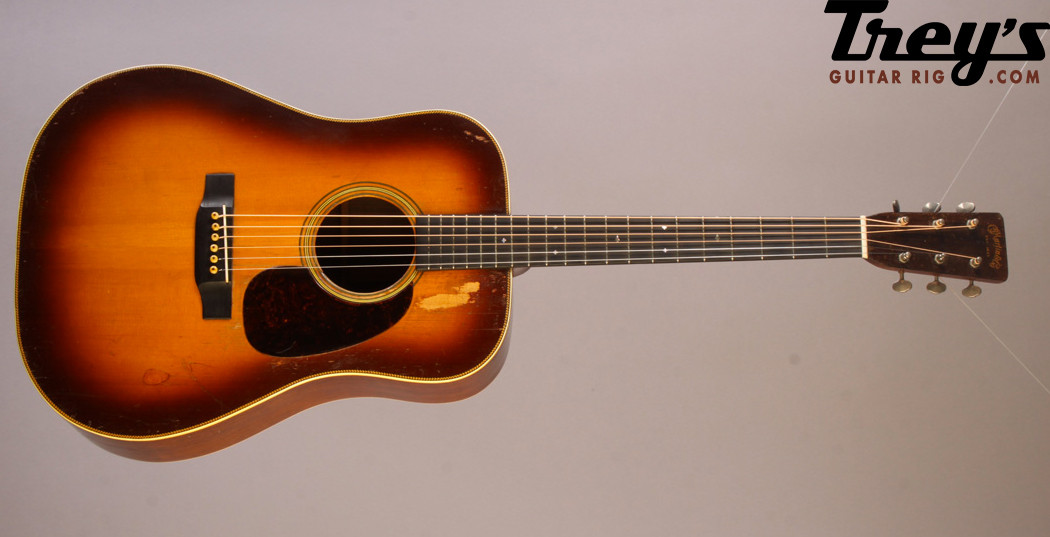 Trey Anastasio's 1943 Martin D-28 acoustic guitar with a sunburst finish, photographed at Gruhn Guitars.
Trey Anastasio's 1943 Martin D-28 acoustic guitar with a sunburst finish, photographed at Gruhn Guitars.
Trey Anastasio frequently plays this nearly pre-war 1943 Martin D-28. The D-28 is Martin’s flagship acoustic guitar model, favored by many iconic acoustic musicians throughout history. This particular D-28 features an original sunburst finish, confirmed by a Gruhn Guitars advertisement from when the guitar was available for sale before Trey acquired it. Until approximately 1969, Martin used Brazilian Rosewood for the back and sides of these guitars, transitioning to Indian Rosewood afterward. Brazilian Rosewood is now an endangered species, and its import to the US is prohibited, making it one of the most highly prized tonewoods for guitars.
- 1968 Martin D-35.
 Trey Anastasio's 1968 Martin D-35 acoustic guitar.
Trey Anastasio's 1968 Martin D-35 acoustic guitar.
The Martin D-35 is a dreadnought-style guitar, similar to the D-28. While the D-28 has a two-piece back, the D-35 features a three-piece back construction. Given its 1968 production year, this guitar is also likely crafted with Brazilian Rosewood.
- 1933 Martin 000-28
 Trey Anastasio holding his 1933 Martin 000-28 acoustic guitar, with the D-28 visible on a stand behind him.
Trey Anastasio holding his 1933 Martin 000-28 acoustic guitar, with the D-28 visible on a stand behind him.
Pictured holding the 000-28 with the D-28 on a stand, Trey often uses this 1933 Martin 000-28 for alternate tunings, including open G and DADGAD, and it is frequently employed for fingerpicking songs.
- Martin Trey Anastasio Signature Model
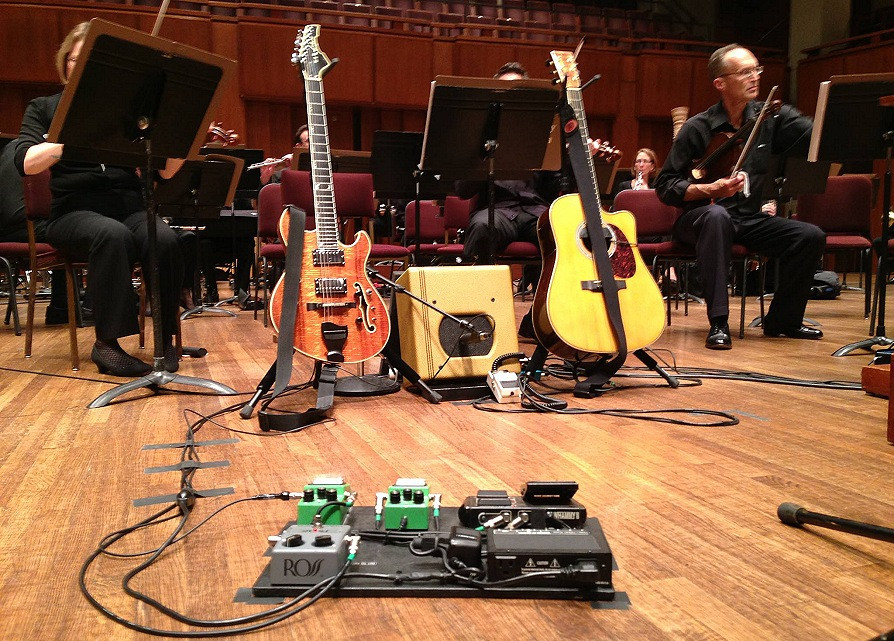 Trey Anastasio playing his Martin signature model acoustic guitar during a 2013 spring performance.
Trey Anastasio playing his Martin signature model acoustic guitar during a 2013 spring performance.
This Martin Trey Anastasio Signature Model guitar includes a cutaway, providing easier access to the higher frets beyond the 14th fret. It features rosewood sides and a three-piece back, similar to a D-35, with koa in the center and rosewood on either side.
- 1939 Martin D-18 Authentic.
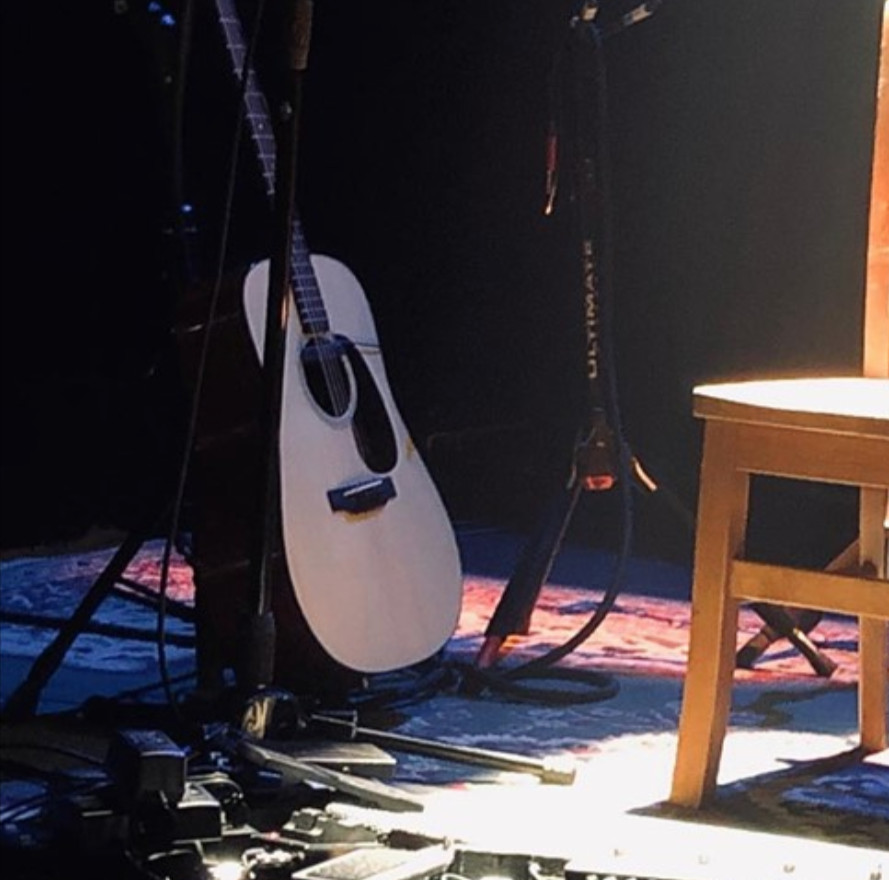 Screenshot of Trey Anastasio's 1939 Martin D-18 Authentic acoustic guitar.
Screenshot of Trey Anastasio's 1939 Martin D-18 Authentic acoustic guitar.
This Martin D-18 Authentic is a reproduction, not a vintage original. More details are available from Martin. Trey first publicly used this guitar in December 2018 during his solo acoustic tour. The image shown is from his October 2019 solo acoustic tour.
- Circle Strings Koa Dreadnaught (2021)
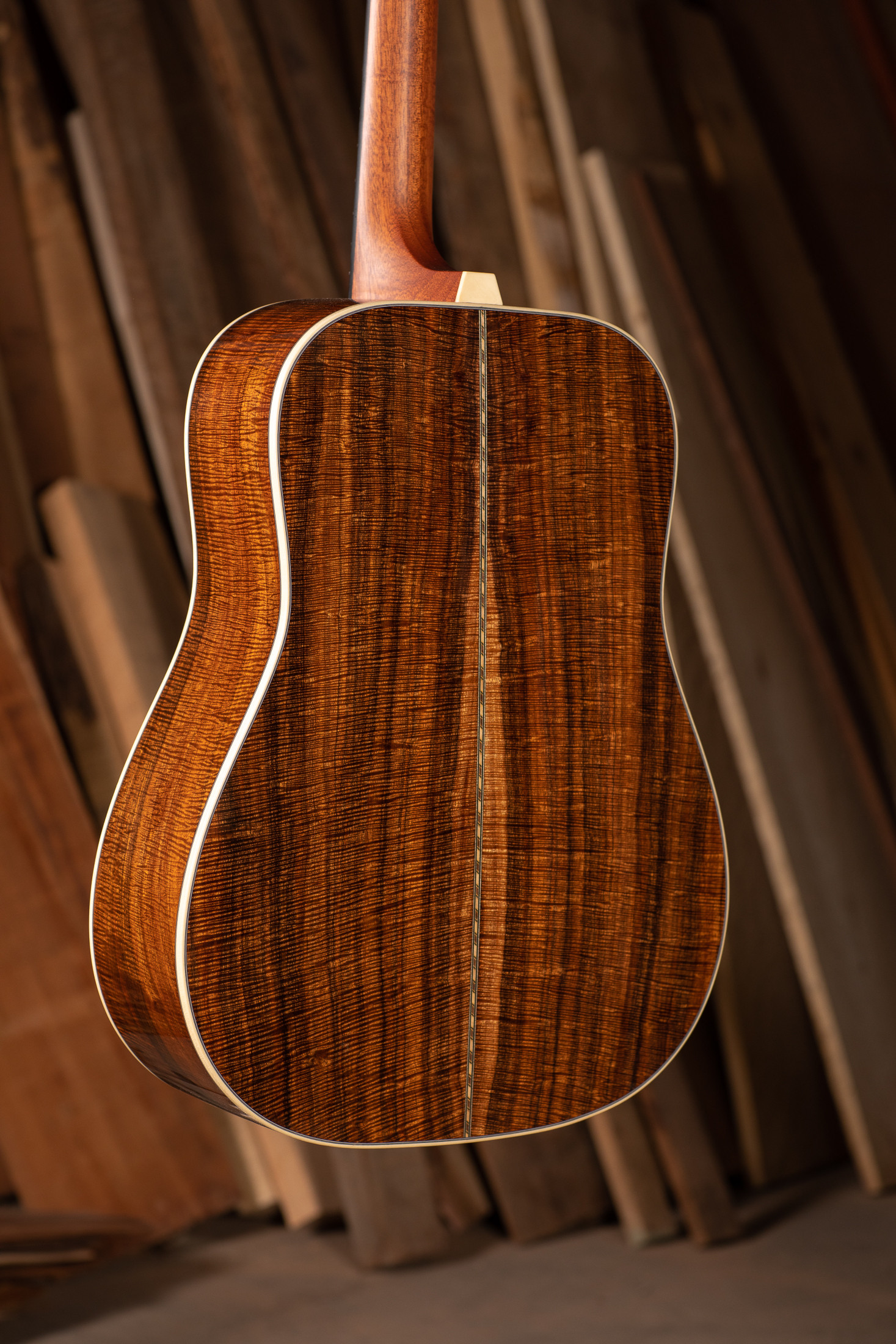 Trey Anastasio's Circle Strings Koa Dreadnaught acoustic guitar, a birthday gift from Page McConnell in 2021.
Trey Anastasio's Circle Strings Koa Dreadnaught acoustic guitar, a birthday gift from Page McConnell in 2021.
This Circle Strings Koa Dreadnaught guitar was gifted to Trey by Page McConnell for his birthday in 2021. Detailed information about this guitar, including a conversation with the luthier, is available in a dedicated article.
Trey Anastasio’s guitars are more than just instruments; they are integral to his artistic expression and the creation of his distinctive musical voice. From the custom craftsmanship of his Languedocs to the vintage resonance of his Martins, each guitar contributes to the rich tapestry of his sound, captivating audiences worldwide.
